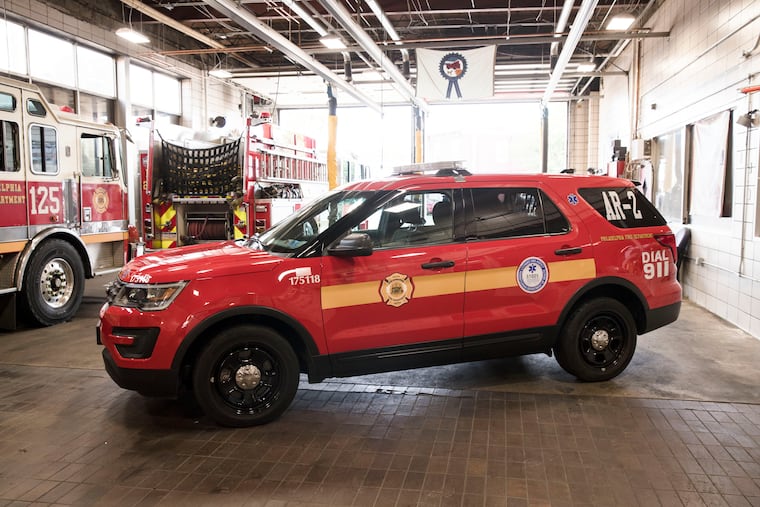The Fire Department shows what treating addiction like a disease, not a crime, looks like | Editorial
The city is trying a different approach to address the opioid crisis that deserves attention.

The city’s opioid crisis is a public health crisis that has placed extraordinary burdens on the city for responses that go beyond combatting the persistently high death rate -- expanding access to treatment and housing, finding solutions for homeless encampments, and conducting clean ups of discarded syringes. The breadth of the crisis touches on all departments. In this all-hands-on-deck moment, traditional roles can become blurred.
That can sometimes lead to tragedy, as happened about two weeks ago when a 28 year old man who was overdosing died in police custody. Police responded to a man in North Broad St. who had already received naloxone -- opioid reversal medication -- from a pharmacist. He became agitated when he saw the officers. While they tried to restrain him, one of the officers punched him in the head. He was declared dead upon arrival at Einstein Medical Center.
While the incident is being investigated, it provides an opportunity to question whether we should expect police to act as paramedics.
In Philadelphia, officers are trained to use and carry naloxone -- and that’s critical in case they come across an overdose like anyone else. Officers administer naloxone dozens of times a year, saving lives. But ultimately, their tools to respond to incidents that require medical professionals or social workers are limited, and frustrations contribute to officer burnout.
The city is trying a different approach that deserves attention. Since the end of April 2019, the Fire Department has deployed an opioids alternative response unit -- called AR-2 -- in Kensington. Every day, a paramedic or EMT and a behavioral health case worker roam the streets in a SUV. They don’t have transport capacity, but they can deliver services -- such as administering naloxone -- until an ambulance arrives, if one is still necessary.
According to the Fire Department, the opioids alternative response unit is a success. In 2019, the unit engaged more than 250 people -- half got connected to treatment. So far, they have not had a situation when workers in the unit felt in danger.
It makes sense for this approach to be scaled up in capacity, for Kensington and other neighborhoods, like South Philadelphia that is also hard hit by overdoses. Expanding capacity to respond to more overdoses can help lighten the load from the police department that has more than enough work to do -- including responding to another crisis: gun violence.
Soon the police department’s tasks will also include safety around a supervised injection site.
Last week, the Mayor’s office laid out a public safety plan for a supervised injection site. As a a final court ruling is still pending, the city is preparing to have constant police presence near a site to both protect clients and prevent crime.
Having a public safety plan is critical for the success of a supervised injection site, and its reception from the community. It is as important to expand efforts like the alternative response unit that treats addiction as a health issue. It could also clear time and resources for police to focus on the gun violence crisis in our city.